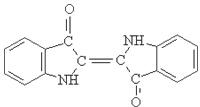best plant for indigo dye
Best Plant for Indigo Dye
Indigo dye has a rich history that spans cultures and centuries, with its deep blue hue enchanting artists, textile creators, and fashionistas alike. The quest for the perfect indigo dye has led artisans around the world to experiment with various plants. Among these, the most revered and effective sources of indigo are the plants of the Indigofera genus, specifically Indigofera tinctoria. This article will explore the characteristics of this remarkable plant, its cultivation, and the dyeing process, all while highlighting why it stands out as the best plant for indigo dye.
Characteristics of Indigofera tinctoria
Indigofera tinctoria, commonly known as true indigo, is a perennial shrub native to both tropical and subtropical regions. It typically grows to a height of up to 1 meter and features delicate, pinnate leaves, small pink or purple flowers, and pods that contain tiny seeds. The magic of indigo lies in the leaves, which contain indican, a colorless compound. When the leaves are processed, indican is converted into indigo, a blue dye that is insoluble in water.
Additionally, true indigo exhibits resilience, thriving in well-drained soil and requiring minimal water, making it an excellent choice for dye farmers. Its adaptability to different climates also means that it can be cultivated in various regions around the world, from Asia to Africa and the Americas.
Cultivation of Indigofera tinctoria
Growing indigo is a relatively straightforward process, contributing to its popularity among dyers. To cultivate this plant, growers should select a sunny location with fertile, well-drained soil. It is important to plant Indigofera tinctoria in rows to allow for adequate airflow and sunlight penetration. Regular weeding and good agricultural practices will promote healthy growth.
Once established, indigo plants usually take several months to grow before harvesting. The ideal time to harvest is during the rainy season when the leaves are lush and packed with the maximum amount of indican. After harvesting, leaves are usually destemmed and prepared for the dyeing process.
best plant for indigo dye

The Dyeing Process
The transformation from leaf to dye involves several steps. First, the leaves are softly bruised or crushed to release the indican. Next, they are placed in a container with water and allowed to steep for several days. During this fermentation period, natural bacteria and enzymes convert indican into indigo. Interestingly, the liquid takes on a yellowish color as the colorless indican is transformed, which can come as a surprise to novice dyers.
After fermentation, the solution is aerated, leading to a chemical reaction that precipitates indigo into a solid form. The solid dye is typically filtered out, rinsed, and dried, resulting in the vibrant pigment that can be used for dyeing textiles. The process can be labor-intensive but is often seen as a labor of love by artisans seeking to create beautiful, sustainable pieces.
Advantages of Using Indigofera tinctoria
One of the primary reasons Indigofera tinctoria is considered the best plant for indigo dyeing is its high yield of dye compared to other indigo sources. It can produce a consistent and vibrant color, which is crucial for textile applications. Moreover, the dye produced from this plant is known for its depth and richness, providing artisans with a beautiful final product that can be both modern and traditional.
Furthermore, the use of natural indigo dye is environmentally friendly compared to synthetic dyes, which can contain harmful chemicals. Choosing natural indigo not only supports sustainable farming practices but also connects consumers to the long history of textile craftsmanship.
Conclusion
Indigo dyeing is an age-old technique that has stood the test of time, thanks in large part to the versatility and richness of the indigo produced from Indigofera tinctoria. Its easy cultivation, high yield of dye, and the mesmerizing depth of color make it the premier choice for those looking to create beautiful, sustainable textiles. As artists and consumers continue to seek eco-friendly options in the world of fashion and design, true indigo stands out not just as a color but as a testament to the artisanship and history woven into every dyed piece.
-
The Timeless Art of Denim Indigo Dye
NewsJul.01,2025
-
The Rise of Sulfur Dyed Denim
NewsJul.01,2025
-
The Rich Revival of the Best Indigo Dye
NewsJul.01,2025
-
The Enduring Strength of Sulphur Black
NewsJul.01,2025
-
The Ancient Art of Chinese Indigo Dye
NewsJul.01,2025
-
Industry Power of Indigo
NewsJul.01,2025
-
Black Sulfur is Leading the Next Wave
NewsJul.01,2025

Sulphur Black
1.Name: sulphur black; Sulfur Black; Sulphur Black 1;
2.Structure formula:
3.Molecule formula: C6H4N2O5
4.CAS No.: 1326-82-5
5.HS code: 32041911
6.Product specification:Appearance:black phosphorus flakes; black liquid

Bromo Indigo; Vat Bromo-Indigo; C.I.Vat Blue 5
1.Name: Bromo indigo; Vat bromo-indigo; C.I.Vat blue 5;
2.Structure formula:
3.Molecule formula: C16H6Br4N2O2
4.CAS No.: 2475-31-2
5.HS code: 3204151000 6.Major usage and instruction: Be mainly used to dye cotton fabrics.

Indigo Blue Vat Blue
1.Name: indigo blue,vat blue 1,
2.Structure formula:
3.Molecule formula: C16H10N2O2
4.. CAS No.: 482-89-3
5.Molecule weight: 262.62
6.HS code: 3204151000
7.Major usage and instruction: Be mainly used to dye cotton fabrics.

